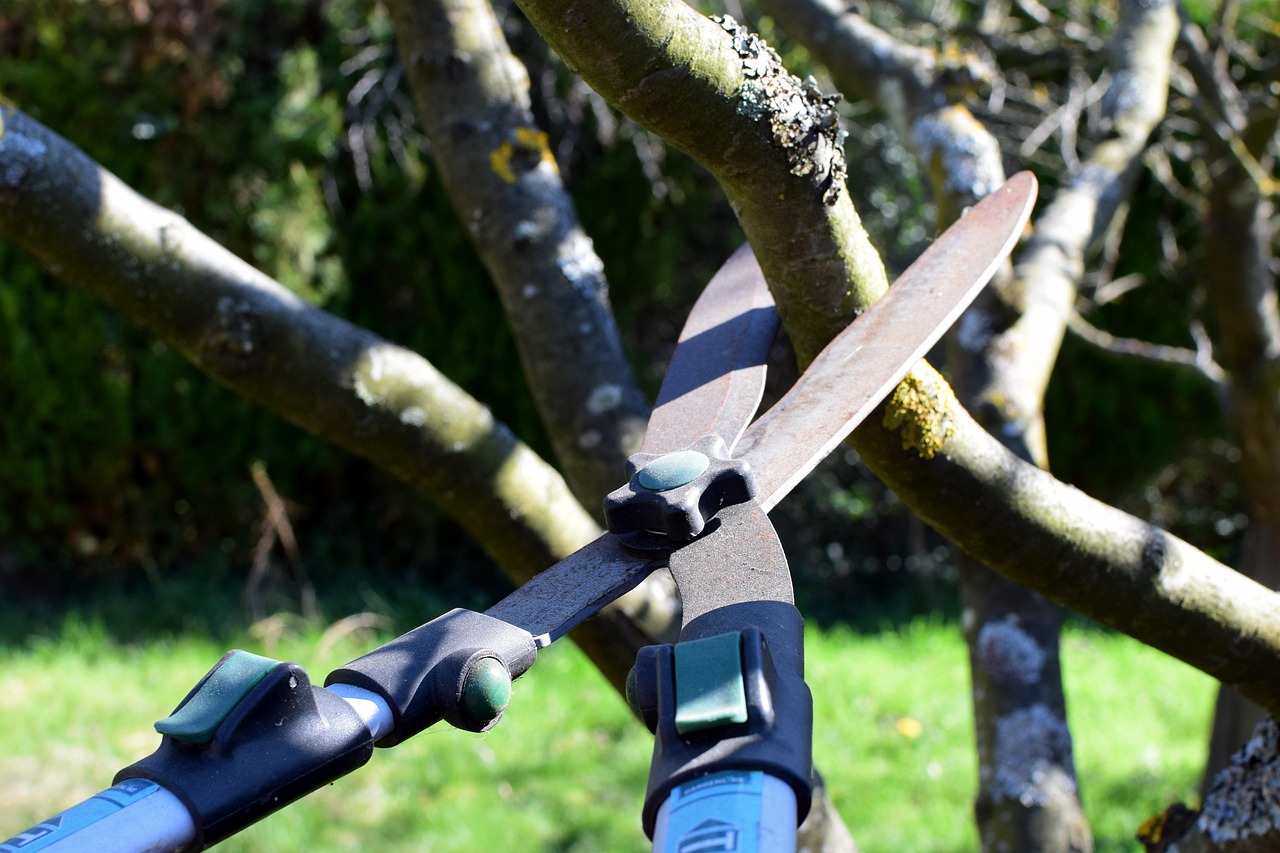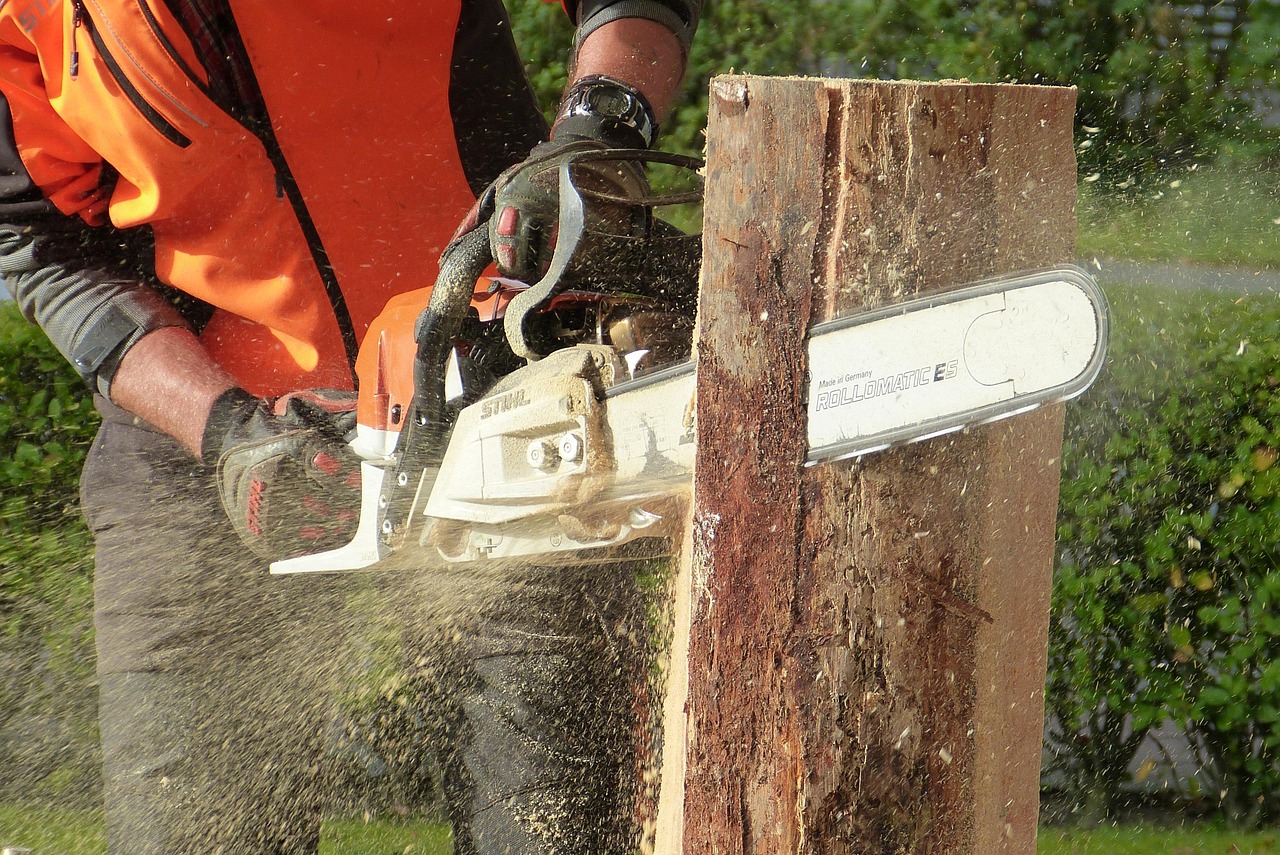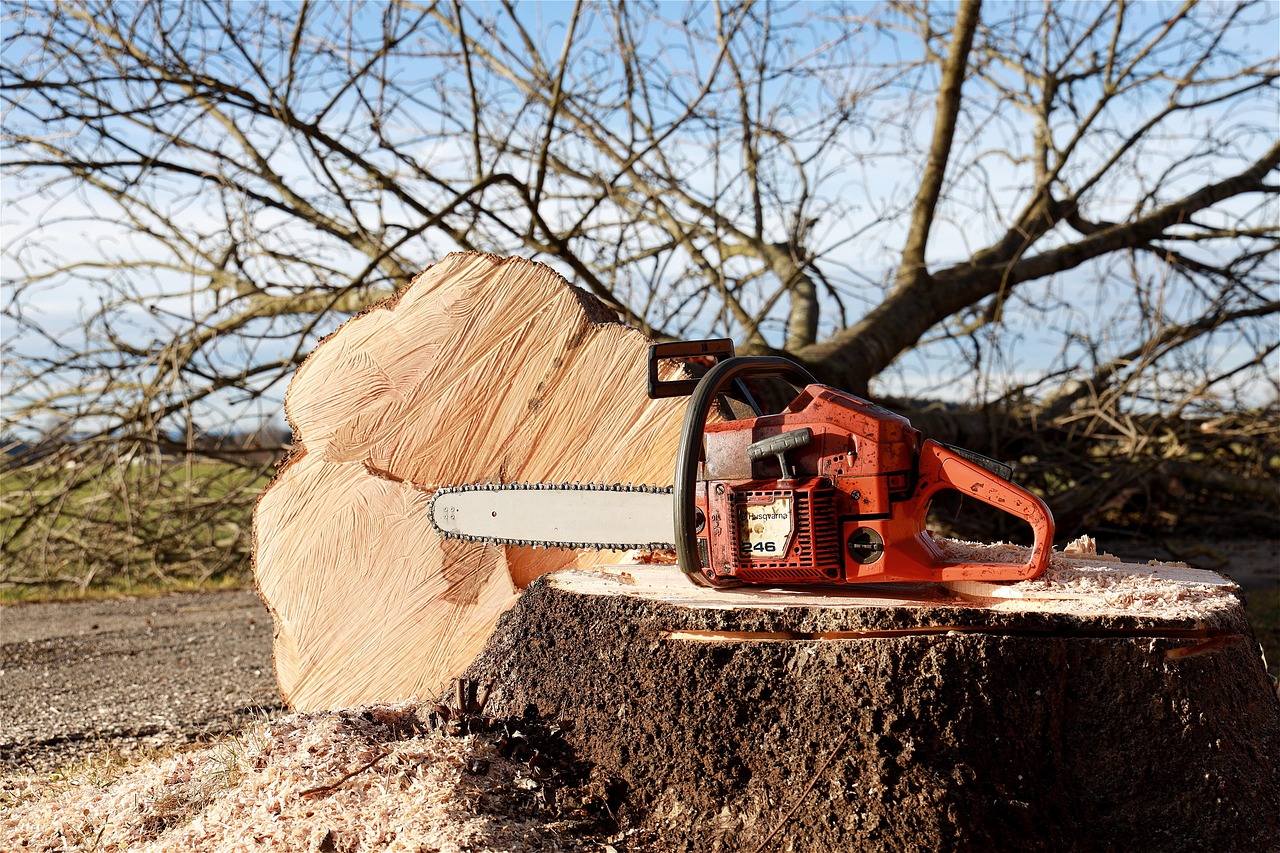Tree pruning and fertilization are essential practices for promoting healthier plant growth. Pruning removes dead or diseased branches, while fertilization provides vital nutrients. Together, they enhance a tree’s structural integrity and overall health, leading to vigorous growth and increased resistance to pests and diseases.
Understanding Tree Pruning
Tree pruning involves selectively removing parts of a tree, such as branches or roots. This practice is crucial for maintaining the health and appearance of trees. Proper pruning encourages new growth, allows for better air circulation, and improves light penetration within the tree canopy. Each cut made during pruning can significantly affect a tree’s growth pattern.

There are several reasons to prune trees. These include:
- Removing dead or diseased limbs to prevent the spread of disease.
- Improving tree structure and shape for aesthetic appeal.
- Enhancing fruit production by allowing more sunlight to reach fruit-bearing branches.
- Reducing the risk of falling branches that could cause injury or damage.
Types of Pruning Techniques
Different pruning techniques serve various purposes in tree care. Understanding these techniques can help you make informed decisions about how to maintain your trees effectively. Below are some common pruning methods:
- Thinning: This technique involves removing specific branches to improve airflow and light penetration throughout the tree.
- Heading: Shortening branches to encourage new growth; this method is particularly useful for shaping trees.
- Reduction: Reducing the size of a tree while maintaining its natural shape.
- Crown cleaning: Removing dead, diseased, or damaged branches from the tree crown.
When to Prune Trees
The timing of tree pruning is essential for effective results. Generally, late winter or early spring is considered the best time for most tree species. During this period, trees are still dormant, which minimizes stress. However, there are exceptions based on species and specific conditions.

| Tree Type | Best Pruning Time | Notes |
|---|---|---|
| Deciduous Trees | Late Winter to Early Spring | Prune before new growth begins. |
| Evergreen Trees | Spring or Late Summer | Avoid heavy pruning in late fall. |
| Flowering Trees | After Flowering | Prune to shape after blooming. |
The Role of Fertilization in Tree Health
Fertilization plays a critical role in ensuring trees receive the essential nutrients they need for optimal growth. Nutrients such as nitrogen, phosphorus, and potassium promote healthy foliage, root development, and flowering. A well-fertilized tree will be more resilient against diseases and pests.
Soil quality and nutrient availability can vary significantly. Therefore, conducting a soil test is recommended before fertilizing. This test will help you determine which nutrients your soil lacks and guide you in selecting an appropriate fertilizer.
Types of Fertilizers for Trees
There are two main categories of fertilizers: organic and inorganic. Each type has its benefits and uses:

- Organic Fertilizers: Derived from natural sources like compost, manure, and bone meal. They improve soil structure and promote microbial activity.
- Inorganic Fertilizers: Synthetic options that provide immediate nutrient availability. They are often used when quick results are desired.
How to Fertilize Trees Effectively
Applying fertilizer correctly is crucial for maximizing its benefits. Here are some key steps to follow:
- Choose the right type of fertilizer based on soil testing results.
- Apply fertilizer during the growing season for maximum effectiveness.
- Spread fertilizer evenly around the tree’s root zone but avoid direct contact with the trunk.
- Water the area thoroughly after applying fertilizer to help nutrients penetrate the soil.
The combination of proper pruning and effective fertilization creates a strong foundation for healthier trees. By following best practices, you can ensure that your trees thrive in your landscape, providing beauty and benefits for years to come.
Common Mistakes in Tree Pruning
While pruning is beneficial, many individuals make mistakes that can harm trees rather than help them. Understanding these common errors can prevent unnecessary damage and promote healthier growth.

- Over-Pruning: Removing too many branches at once can stress the tree. It is essential to prune gradually and only as needed.
- Improper Timing: Pruning at the wrong time can interfere with the tree’s natural growth cycle. Always follow the recommended timing for each species.
- Neglecting Tools: Using dull or dirty tools can cause ragged cuts and may introduce disease. Always maintain sharp, clean pruning tools.
- Ignoring Tree Type: Different trees have different needs. Not all trees benefit from the same pruning techniques.
Signs Your Tree Needs Pruning
Recognizing when a tree requires pruning is crucial for its health. Here are some signs that indicate it may be time to take action:
- Dead or Dying Branches: These can be a source of disease and should be removed promptly.
- Overcrowded Canopy: If branches are crossing or rubbing against each other, thinning may be necessary to improve airflow.
- Weak Growth: If a tree shows uneven growth patterns, it may require corrective pruning.
- Excessive Suckering: If numerous small shoots are emerging from the base or lower trunk, these can be pruned back to encourage stronger growth.
Understanding Tree Fertilization Needs
Just as with pruning, understanding when and how to fertilize is essential for maintaining tree health. Trees have specific nutrient requirements that can vary based on species, age, and environmental conditions.
Factors Influencing Fertilization Requirements
The following factors can significantly influence a tree’s fertilization needs:
- Soil Type: Sandy soils may leach nutrients quickly, while clay soils retain them longer.
- Tree Species: Some trees require more nutrients than others. For example, fruit trees often need more nitrogen to support fruit production.
- Age of the Tree: Young trees typically need more frequent fertilization to support rapid growth, while mature trees may require less.
- Environmental Conditions: Factors like drought or extreme temperatures can affect nutrient uptake in trees.
How to Assess Soil Nutrient Levels
A proper assessment of soil nutrient levels is vital for effective fertilization. Here are steps to evaluate your soil:
- Conduct a Soil Test: Obtain a soil test kit from a local extension office or garden center. Follow the instructions for collecting samples.
- Analyze Results: Look for key nutrients such as nitrogen (N), phosphorus (P), and potassium (K) along with pH levels.
- Consult Experts: If unsure about interpreting results, consider consulting with a local agricultural extension agent or a gardening expert.
Fertilization Techniques for Specific Tree Types
The method of fertilization can vary based on the type of tree being cared for. Below are some techniques suitable for common tree types:
Fruit Trees
Fruit trees often require higher nitrogen levels during their active growth phase. A balanced fertilizer or one specifically formulated for fruiting plants is recommended. Apply in early spring as new growth begins.
Ornamental Trees
Ornamental trees may benefit from slow-release fertilizers that provide nutrients over time. Applying in late spring helps support healthy foliage without encouraging excessive growth.
Shade Trees
For large shade trees, deep root fertilization may be beneficial. This technique involves applying fertilizer below the surface of the soil, reaching deeper roots where nutrients are needed most.
Nutrient Deficiencies in Trees
A tree suffering from nutrient deficiencies may display specific symptoms. Recognizing these symptoms allows for timely intervention. Common deficiencies include:
<thSymptoms
| Nutrient Deficiency | Treatment | |
|---|---|---|
| Nitrogen | Pale green leaves, stunted growth | Apply nitrogen-rich fertilizers; consider organic options like compost. |
| Phosphorus | Purple tint on leaves, poor root development | Add phosphorus-rich fertilizers; bone meal is a good organic choice. |
| Potassium | Browning leaf edges, weak stems | Use potassium-rich fertilizers; potassium sulfate can be effective. |
Being proactive about pruning and fertilization can significantly enhance the vitality of your trees. By recognizing signs of distress and understanding the specific needs of each tree type, you can ensure they thrive in your landscape for years to come.
Seasonal Considerations for Pruning and Fertilization
Understanding the seasonal changes in tree growth is crucial for effective pruning and fertilization. Different seasons present unique opportunities and challenges that can impact tree health. By aligning your practices with these seasonal patterns, you can enhance the effectiveness of your efforts.
Spring: The Awakening
As trees emerge from dormancy in spring, they enter a critical growth phase. This is the ideal time for:
- Pruning: Late winter to early spring allows for pruning before new growth begins. This timing minimizes stress and encourages healthy new leaves and shoots.
- Fertilization: Applying fertilizer in early spring provides essential nutrients just as trees start actively growing. This helps support robust leaf development and overall vigor.
Summer: Growth and Maintenance
During the summer months, trees are in full growth mode. Maintenance practices become crucial:
- Selective Pruning: Remove any dead or damaged branches to promote healthy growth. However, avoid heavy pruning during this period as it can stress the tree.
- Ongoing Fertilization: If soil tests indicate deficiencies, additional fertilization may be necessary to support continued growth, especially for young trees.
Fall: Preparing for Dormancy
As temperatures cool, trees prepare for winter dormancy. This season is vital for:
- Final Pruning: Fall can be a good time to do light pruning. Removing any weak or broken branches now helps trees withstand winter storms.
- Fertilization Consideration: Some experts recommend a final application of fertilizer in early fall to support root development before winter. This can help trees store nutrients for the dormant season.
Winter: Dormancy and Planning
Winter is a time of rest for trees, but it is also an opportunity for planning:
- Assessing Tree Health: Use this time to inspect trees for signs of damage or disease that may need attention in the spring.
- Preparing Tools and Supplies: Ensure pruning tools are sharpened and ready for use when the growing season begins.
The Importance of Tree Health Monitoring
Regular monitoring of tree health is essential to identify issues early on. Healthy trees will resist pests and diseases more effectively. Here are some key aspects to focus on when assessing tree health:
Visual Inspections
Conduct routine visual inspections of your trees. Look for:
- Leaf Color and Texture: Healthy leaves are usually vibrant and lush. Discoloration or wilting can indicate problems.
- Bark Condition: Check for cracks, peeling, or unusual growths that could signal disease.
- Branch Structure: Inspect branches for signs of weakness or decay.
Pest and Disease Identification
Pests and diseases can take a toll on tree health. Here are common signs to watch for:
| Pest/Disease | Symptoms | Treatment |
|---|---|---|
| Aphids | Sticky residue on leaves, curled leaves | Introduce natural predators like ladybugs; use insecticidal soap if necessary. |
| Canker Diseases | Bark lesions, branch dieback | Prune affected areas; apply fungicides as recommended. |
| Pine Beetles | Pine needles turning brown, bark holes | Remove affected trees; insecticides may be needed for severe infestations. |
Companion Planting and Its Benefits
Companion planting involves growing different plants together for mutual benefit. When applied to trees, this technique can enhance nutrient uptake and pest control. Consider these benefits:
- Nitrogen Fixation: Planting legumes near trees can enhance soil nitrogen levels, benefiting nearby plants.
- Pest Deterrence: Certain aromatic plants can repel pests that threaten tree health.
- Soil Improvement: Some companion plants improve soil structure and moisture retention, benefiting tree roots.
Creating a Tree Care Schedule
A well-organized tree care schedule helps ensure that all necessary tasks are completed at the right times throughout the year. Here’s a simple framework to follow:
- Monthly Checks: Conduct visual inspections and note any changes.
- Seasonal Tasks: Mark specific months for pruning and fertilization based on seasonal recommendations.
- Annual Soil Testing: Plan to conduct soil tests every year in the fall or early spring.
- Pest Monitoring: Keep track of pest populations during the growing season and apply treatments as necessary.
This proactive approach to tree care fosters healthy growth and enhances the longevity of your trees, ensuring they contribute beauty and value to your landscape for years to come.
Advanced Tree Care Techniques
In addition to the fundamental practices of pruning and fertilization, there are advanced techniques that can further enhance tree health and growth. These techniques require a deeper understanding of tree biology and environmental factors, but they can yield significant benefits.
Mulching
Applying mulch around the base of trees can provide numerous advantages:
- Moisture Retention: Mulch helps retain soil moisture, reducing the need for frequent watering.
- Weed Suppression: A layer of mulch acts as a barrier against weeds, which can compete with trees for nutrients and water.
- Temperature Regulation: Mulch insulates the soil, keeping it cooler in summer and warmer in winter.
When applying mulch, ensure that it is spread evenly and does not touch the trunk of the tree. A depth of 2-4 inches is generally recommended for optimal benefits.
Watering Techniques
Proper watering is crucial for tree health. Here are some effective techniques:
- Deep Watering: Watering deeply encourages roots to grow deeper into the soil, promoting stability and access to nutrients.
- Drip Irrigation: This method provides a slow, steady supply of water directly to the root zone, minimizing waste and evaporation.
- Rainwater Harvesting: Collecting rainwater for irrigation is an eco-friendly way to supply your trees with water while conserving resources.
Integrated Pest Management (IPM)
IPM is a comprehensive approach to managing pests with minimal impact on the environment. This strategy involves:
- Monitoring: Regularly check trees for signs of pest infestations or diseases.
- Identification: Correctly identify pests to apply suitable management techniques.
- Prevention: Implement practices that discourage pest populations, such as maintaining healthy trees through proper care.
- Treatment: Use a combination of biological, cultural, and chemical controls only when necessary.
The Economic Value of Healthy Trees
Investing time in tree care not only benefits the environment but also adds economic value to properties. Healthy trees can:
- Increase Property Values: Well-maintained trees enhance curb appeal and make properties more attractive to buyers.
- Reduce Energy Costs: Trees provide shade, reducing cooling costs in summer and protecting homes from harsh winter winds.
- Improve Air Quality: Trees play a vital role in filtering pollutants and producing oxygen, contributing to better public health.
Caring for Urban Trees
Urban environments present unique challenges for tree care. Factors such as soil compaction, pollution, and limited space can hinder tree growth. Strategies for urban tree care include:
- Selecting Native Species: Native trees are better adapted to local conditions and often require less maintenance.
- Soil Amendments: Improving urban soil quality with organic matter can help trees thrive in compacted soils.
- Tree Pits and Planters: Designing proper planting spaces that allow for root expansion while providing adequate drainage is essential.
Community Involvement and Education
Engaging with the community can foster a culture of tree care. Educational programs can raise awareness about the importance of trees and encourage residents to participate in tree planting and maintenance initiatives. Collaborating with local organizations can amplify efforts in preserving urban forests.
Final Thoughts
Caring for trees through proper pruning and fertilization is essential for their health, longevity, and overall contribution to the environment. By understanding seasonal needs, recognizing signs of distress, and implementing advanced care techniques, you can ensure that your trees thrive. Investing in tree care not only enhances your landscape but also provides economic benefits and improves community well-being.
The knowledge shared in this article serves as a foundation for effective tree management. Whether you’re a homeowner, gardener, or landscape professional, adopting these practices will promote healthier plants and contribute positively to our ecosystems. Remember that trees are long-term investments; nurturing them today will yield rewards for generations to come.
Thank you for exploring the world of tree pruning and fertilization with us. Let’s work together to create greener, healthier environments!
